Navigating the Tragic Mulatto Tripwire:
How My Biracial Identity Informs My Mixed-Race
Characters
When I submitted my first
novel for publication in 2006, several agents, respectfully declining
representation but generous enough to offer feedback, asked whether the
protagonist—a mixed-race ballet dancer based on yours truly—really needed to be
biracial rather than simply Black. If she were Black only, that might
streamline the plot. One agent elaborated: if the main character was going to
have an eating disorder, and feel torn between academia and
the ballet world, then making her mixed—Black and Jewish—just
seemed like too many complications. She had enough problems. But to me, a Black
and Jewish eating disorder survivor torn between ballet and academia? That
didn’t feel complicated at all. It was my normal!
Thankfully, the way we
write and read about race and identity has changed since then. The #ownvoices #weneeddiversebooks movement pushed
the industry to hire diverse editors, to amplify stories about marginalized
people, written by marginalized writers. There are also several
Black/white biracial authors—Danzy Senna, Zadie Smith, Rebecca Walker, James
McBride—who are household names. I am grateful for their centering of biracial-ness—not
in defiance of Blackness or whiteness or monoracial-ness, but as itself: an
amalgamation of perspectives and racial being in a world that asks you to choose
one race or the other, argues with you about your choices, and has a multitude
of thoughts on what you represent. I think it’s fair to guess that all authors
find it most comfortable to write from the perspective of like-me
characters. Each of us is our own square one, after all. Black and Jewish is my
default setting, so that lens becomes the default setting of my fiction.
But there are tripwires
to avoid, writing about my own tiny demographic. If I am writing for a wide
audience, consisting not only of like-me readers, but also of many not
Black/white/Jewish/biracial readers, I want to accurately depict my people free
of stereotypes and negative characterizations. For example, the last thing I
want to do is feed the tragic mulatto stereotype: mired in identity
crisis, both/neither Black and/or white, alienated by each race, perpetually other,
never belonging anywhere. But worrying too much about how you are representing
your marginalized main character’s marginalized group becomes an impossible
constraint. You must shake off that inner scrutiny or your words have no chance
of flowing. All kinds of humans face strife and alienation, make bad decisions,
hurt one another, get messy, act like jerks. We Black/white/Jewish/biracial
people are no more or less tragic than anyone else. Which is to say, some of us
frankly are.
In my second novel, MIRROR
ME, Eddie, the protagonist, is in fact mired in identity crisis, yearning in
vain to belong. Eddie’s journey does indeed cycle through distress and sorrow.
The object of his quest—belonging, love, connection to another who is like him—is
a moving target, mostly embodied by his brother’s fiancée, Lucy, who
alternately toys with, confides in, and professes to love him back. Eddie’s
chase of Lucy brings out the desperate worst in him. He teeters dangerously on
the edge of tragic.
Eddie’s identity issues
stem from being not only biracial, but also adopted, knowing little about his
biological parents. Eddie is also equipped with an alter-ego, Pär, the main
narrator of the book, who alternately observes and takes over Eddie’s actions.
Pär also holds—and withholds from Eddie himself—the secret about Eddie’s origin
and birth circumstances.
Though I was not adopted,
I spent several years as an adoption caseworker at the Spence Chapin agency.
Part of my job was organizing meetings between birth parents and adoptive
families, as well as placing infants in the arms of their adoptive parents. It
was also my job to write what we called a “background,” which was a letter to
every baby including all we could tell them about their birth parents and the
reasons for their choice of adoptive placement.
All Eddie knows about his
birthmother, Britta, is that she was Swedish, tall, blonde and too young to
raise him. His birthfather was African, (at least according to the paperwork
and the birthmother’s story) but no one ever bothered to learn where in that
vast continent he came from. And it’s the ‘70s. No one encouraged the Ashers to
celebrate either of Eddie’s cultures of origin, the way we adoption caseworkers
did in the ‘90s.
Though my experience with
adoption is largely professional, I have lived multiracial identity for over
five decades. I was born to a white, Jewish mother and a Black father. What I
share with Eddie is the experience of walking through the world under the
umbrella of my mother’s whiteness, taking certain privileges for granted as we
ran errands, rode buses, hailed taxis. I attracted little attention until Mom
let go of my hand and I became, in the eyes of strangers, a small Black girl,
out of place and all alone. It was different with my father, to whom I bore a
stronger resemblance. Whether we visited his beloved barbershop in Harlem or
attended a book party at Viking Press, where he was an art director, it was
plainly visible that I belonged to and with him.
Unlike Eddie, I grew up
valuing Blackness and understanding that it was part of me. Unlike Joanne,
Eddie’s mother, who is always telling him to watch out for the Black kids (she
doesn’t say “the other Black kids”), my mother valued and respected Blackness
as well. And, while my mother was not religious, Jewishness was part of our
home and my identity. My parents taught me about the joys of each culture, but
also about the racism and antisemitism they each had faced, the harassment they
had endured as an interracial couple in the ‘50s and ‘60s. In this respect I
grew up immersed in who I was, but as an only child, I was often alone to make
sense of it. It is no surprise that many of my closest friends are also of
mixed race. We’ve all had different experiences of being of two races,
depending on our appearances—how white or Black we look to others—our closeness
with or rejection by family members, the places where we were raised.
I made sure that Eddie was
not the only biracial character in MIRROR ME. Through his interactions and
relationships with the other mixed characters, Lucy and Andy, in different
ways, Eddie finds what he’s looking for—more or less. (No spoilers here!)
Lucy is the femme fatale
of the book—beautiful, at least to Eddie—but cruel, due to her main childhood
trauma: the suicide of her mother. Unable to trust others, Lucy is fickle in
love, far better at receiving than giving. Lucy is drawn to every man who pays attention to
her, and Eddie is no exception. Eddie is drawn to their sameness, her
girl-version-of-Eddie-ness. Their relationship is more spiritual than sexual,
but she needs him, leads him on, while reminding him that she belongs to his
brother. She is also an opportunist. Being lighter-skinned than her monoracial
Black half-sisters affords Lucy unearned privileges—special treatment from
their father, a spot in the corps de ballet of a prestigious but
racially monochromatic dance company.
Andy, on the other hand,
represents a more positive and joyful existence. Raised in Western
Massachusetts by his white single mother, Andy is unaware of his father’s
identity and deprived of any significant exposure to Black people. At the age
of ten, Andy is sent to study dance in New York. Taken in by the Wynter family,
Andy is enthralled by their world of lush, abundant Black culture—music, art,
dance. Andy thrives, embracing it all, especially once he becomes a teen and finds
the dance world a safe, hospitable place to be gay and out. Yet even with
Andy’s joyous embrace of life, dance, and his biracial and queer identities, he
faces heartbreak: losing the man he loves to none other than Lucy herself.
But personal loss and
turmoil make Eddie, Lucy, and Andy human, not tragic. When a character
moves through and learns from their pain, as opposed to getting stuck in it—
when the tragedy is transitory, resolved as the narrative comes together—it’s
only one leg in the rollercoaster ride that makes a story. By demonstrating a
range of outlooks, experiences and emotional responses to life’s foibles, I strive
to avoid stereotypes amongst my biracial characters, hopefully showcasing the
multifaceted humanity we all belong to, each of us on our individual journeys. While our mosaic selves may be complex, they
are not complicated. Instead, the parts that distinguish and connect us add
richness to the stories of how we all move through the world.
DEBS: Reds and readers, Lisa will be checking in on the comments, so do say "Hi," and ask her more about her book! I am especially intrigued by Eddie's alter ego! (And the ballet!)
Lisa Williamson Rosenberg is the author
of Mirror
Me (December 3, 2024; Little A) and Embers on the Wind
(August 1, 2022; Little A). She is a former ballet dancer and psychotherapist
specializing in depression, developmental trauma, and multiracial identity. Her
essays have appeared in Literary Hub, Longreads, Narratively, Mamalode,
and The Common. Her fiction has been published in the Piltdown
Review and in Literary Mama, where Lisa received a
Pushcart nomination. A born-and-raised New Yorker and mother of two college
students, Lisa now lives in Montclair, New Jersey, with her husband and dog.
You can visit Lisa online at lisawrosenberg.com
Here's more about Mirror Me:
A psychiatric patient’s desperate search for answers reveals peculiar memories and unexpected connections in a twisty and mind-bending novel of love, family, betrayal, and secrets.
Eddie Asher arrives at
Hudson Valley Psychiatric Hospital panicked that he may have murdered his
brother’s fiancée, Lucy, with whom he shared a profound kinship. He can’t
imagine doing such a terrible thing, but Eddie hasn’t been himself lately.
Eddie’s anxiety is nothing new to Pär, the one Eddie calls his Other, who protects Eddie from truths he’s too sensitive to face. Or so Pär says. Troubled by Pär’s increasing sway over his life, Eddie seeks out Dr. Richard Montgomery, a specialist in dissociative identities. The psychiatrist is Eddie’s best chance for piecing together the puzzle of what really happened to Lucy and to understanding his inexplicable memories of another man’s life.
But Montgomery’s methods trigger a kaleidoscope of memories that Pär can’t contain, bringing Eddie closer to an unimaginable truth about his identity.









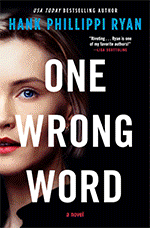
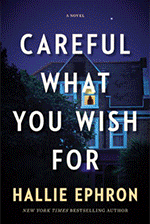
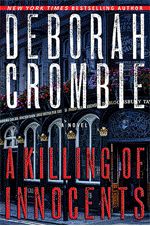


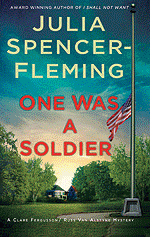
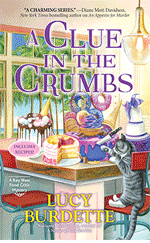
"Mirror Me" sounds fascinating, Lisa, and I'm looking forward to reading it [I love ballet and always enjoy stories in which it has an important part] . . . .
ReplyDeletePerhaps you'd tell us a bit more about Eddie's "Other"???
Hi Joan. I love this question and I'm going to answer while carefully avoiding spoilers! Pär is a disembodied consciousness who took the name Eddie’s birth mother gave him. What gives the book it’s magical realism street-cred is Pär himself, whom I think of, not as Eddie’s alter-ego, but more as his own personal Greek Chorus. Pär knows the truth of Eddie’s lapses and also observes him when he’s not lapsing. Pär knows the secrets about Eddie’s birthparents, his adoption circumstances, and his identity on the whole.
DeleteIn childhood, Par saw his initial purpose as protecting Eddie from experiences and feelings he didn’t think Eddie could handle. By the time the book begins, that first scene, from which we’ll flash back as Eddie processes his memories with Dr. Montgomery—Par’s goal is different. They are at odds. Eddie’s life goal is to belong, to be at home with himself and others, in control of his destiny. Par’s goal is to take the body for himself.
Pär is behind the questions that hopefully drive readers forward: Who and what is he? Is Pär part of Eddie’s mental illness? Is Eddie mentally ill? How will Pär use his influence over Eddie? Will Eddie fight for his own agency?
Wow, this is so fascinating, Lisa!
DeleteWow . . . what a fascinating character . . . .
DeleteGreat question, Joan!
ReplyDeleteWow, Lisa, I'm glad you stuck with publishing long enough so your voice and writing could be heard. So many congratulations on the new book. It's been hugely satisfying in the last decade or so to see all these new BIPOC authors rise up. Members of Crime Writers of Color like Kellye Garret, Gigi Pandian, Delia Pitts, and Valerie Burns are good friends and having so much success in several subgenres.
ReplyDeleteBallet was a big part of my childhood. How long did you dance and why did you stop?
My adopted granddaughter is Black, with white (and one Jewish) parents. She's only one, but they are already working hard to make sure plenty of Black people are in her life. Any tips for them?
Thanks Edith! I danced professionally until I was 26 and I stopped honestly because there was so much more I wanted to do in life. Back in the 80's when I was training for a career in ballet, you were really expected to put college on hold, audition and hopefully secure a spot in a corps de ballet rather than attending a conservatory or college with a dance program. I had to choose between American Ballet Theater's apprentice company ABT II and Princeton. I chose the latter because I didn't feel mature enough for a "grown up" job! But, after attending such a wonderful university, my "ballet blinders" were off and I was hungry for a different kind of life. Still, I kept my promise to myself, stayed in shape, trained hard during summers and managed to dance professionally post college, but my heart was never in it the same way again.
DeleteAnd congratulations on your growing family! My advice is to make sure that they live in a diverse area, that your granddaughter is in a diverse school, and that people around them are comfortable discussing race and racial difference. Sounds like they are on the right track!
Lisa, your background is very interesting. There certainly are challenges to being biracial that people who are not will never experience.
ReplyDeleteIt's fascinating how you have used so much of your life experience to inform this book. I think editors still don't understand that readers can handle more than one idea or challenge at the same time.
Thank you, Judy! I have hope for publishing that many editors are getting there. :)
DeleteHi again, Judy. Accidentally commented as anonymous, but that was me!
DeleteWow, the book sounds amazing--I look forward to reading it. I am particularly interested in the Eddie-Par (blogger won't let me add the umlaut) dissociation/relationship and how it gets resolved.
ReplyDeleteThank you, Gillian! I just shared some more about Pär above in my response to Joan's question.
DeleteWelcome, welcome welcome – – this is so brilliant. And truly fascinating. I am intrigued by the “background “letters. What a powerful and life-changing thing… Can you tell us more about writing those? Does every adoption agency do that? Xxxx it feels like such a responsibility.
ReplyDeleteThanks so much Hank! Writing those background letters at Spence-Chapin really felt like a momentous responsibility, especially since I knew so many adult adoptees who had so many questions about their birth parents and why they had chosen adoption rather than parenting. Not sure if it's common for adoption agencies to do that. I'm fairly certain it doesn't happen with attorney-coordinated adoptions. We usually knew a fair amount about the birth mother and her family and could put in details about their age, race, faith, hobbies their favorite sports teams, how many siblings they had etc. The harder part was the birth father, especially if he was an unknown party.
DeleteLife is messy, isn't it? Hardly anything is straight-forward or simple, despite how so many seem to believe it is. With taboos of racial "mixing" falling away in recent decades a lot of us identify as more than one confining category these days. Although many seem to deny that reality at the same time.
ReplyDeleteMy great-nephew is biracial, and at 15 it's interesting to see how differently his childhood has been than it would have been in the 1960's when I was his age. Instead of being marginalized among his peers, he is a very bright, popular kid, and amazingly well-adjusted (not considering his racial makeup, but rather despite his wacky home life). I can't wait to see what he becomes, but I have no doubt he will succeed at whatever it is.
What a complicated set of characters and situations you've conceived, Lisa. You have had a rich history to mine for this story, and used it well, it seems.
Thank you Karen! It is so true that the generation of biracial that you are matters. As the child of older parents, my own experience growing up mixed during the seventies was much easier than the children of my parents' friends, who were raised just one decade earlier.
DeleteLisa, so glad you were able to stick to your story and bring the richness of your experience to the page. MIRROR ME sounds fascinating!
ReplyDeleteThank you so much, Liz!
DeleteCan you tell us more about your publishing journey, Lisa?
ReplyDeleteHi Deborah! Thanks so much for hosting. As for my journey? I’d been writing all my life: stories, essays, even a few novels—including one I’d queried to no avail. I’d read craft books, I’d taken craft workshops, but incorporating what I’d learned into my actual writing was a ways off until I sought the services of Christina Baker Kline, who was actually doing developmental editing at the time. Christina was kind, patient, though very blunt about the massive amount of work my book needed. Working with Christina was kind of like getting a private MFA! Sometime after that, I started going to conferences, where I learned everything I could about the publishing industry, including how to write a great query letter for the purposes of getting an agent. I wound up getting my agent, Uwe Stender—after writing yet another book: a YA novel about ballet dancers—through a Twitter pitch contest called #pitmad.
DeleteThe YA book never found a publisher, but EMBERS ON THE WIND—a novel-in-stories about an Underground Railroad safehouse turned 21st Century Airbnb, spotlighting encounters between the ghosts of runaway slaves and modern-day Black women guests—did sell. It came out in August 2022.
Kudos to you on your perseverance, Lisa! I'm sorry your YA book never found a publisher as it would have found a market with me because of my fictional boy ballet dancer. I didn't dance myself, so am always wanting to learn more about the experience. As for EMBERS ON THE WIND, what a fascinating and original concept!
DeleteWelcome, welcome, welcome!!! Lisa, I am so glad you stuck to publishing despite agents' comments in 2006. I wonder if you were Deaf, would they ask you "can you read my lips?"
ReplyDeleteAnd how did you find an agent to work with you?
"Mirror Me" sounds fascinating. You had me at Ballet. I love stories about the ballet. And ice skating.
If I may ask about the adoption agency. When you worked at the adoption agency, were any of the children orphans?
What do you mean by orphans?
DeleteHi Diana! Thank you for the welcome. I'm going to answer Debbie's question about my publishing journey next and will elaborate on my agent search there. Ah! And about the adoption agency question: in terms of actual orphans, I don't believe any of the children adopted from the United States were actually orphans, having lost both parents.
DeleteWe had an international program, where families could adopt from Russia, Bulgaria, Moldova, China, Korea or Columbia as well. Most of those children were largely cared for in "orphanages" and referred to as "orphans," but the truth is, there was no way for us to actually determine whether or not the children had living parents. The very sad part is that decades later, people are learning that some international adoptions were the result of infants being abducted from hospitals. I hope the agency I worked for vetted the circumstances well enough to avoid this kind of thing.
I had no idea, Lisa. Now that would make the backbone of a novel...
DeleteI love your outlook on life, Lisa. Happenings are human, not tragic because of your DNA. Eddy and Par are fascinating, taking turns at directing their life. I fear that Eddy may get lost though as Par becomes stronger.
ReplyDeleteThanks so much, Pat! I look forward to hearing what you think of Eddie's and Pär's story!
DeleteLisa, I love how you take what others view as "too many complications" and look at it as "that's just how it is". Fabulous! I love complex characters and you can clearly deliver. Looking forward to reading Mirror Me!
ReplyDeleteI was struck reading this when I spotted the reference to Spence Chapin services.
ReplyDeleteWe adopted our two children through them. Our son is from Korea and our daughter is from Peru. Our case-worker was the amazing Flicka Van Praag (I don't remember if that is how it's spelled).
Spence made a point of making us aware of the fact that as two white parents we were entering the world of minority parents/families.
Well done, Lisa.
Hi Libby! Such a small world! Flicka was wonderful wasn't she? So wise and soft spoken. She interviewed and hired me when I began working on Spence. I worked with families adopting from China and Eastern Europe, as well as domestically. Flicka was instrumental in making sure families embraced their children's cultures.
ReplyDeleteIt's so hard to stick to your instincts when you're trying to get (especially the first) novel published... you were so smart and brave to do so. And you had impeccable timing! Your story reminded me of how awed I felt reading (a first for me) a book that dealt with being bi-racial - James McBride's THE COLOR OF WATER. You mentioned that book, too.
ReplyDeleteThank you so much, Hallie! I do feel like the timing was good. Embers on the Wind did come out first though, and I think it was good to have a debut grounded in a more widely known part of history. I loved The Color of Water. Also White Teeth (Zadie Smith) and Caucasia and Colored Television (Danzy Senna).
DeleteThanks for all that you shared with us, Lisa. Mirror Me sounds interesting: clearly a work of fiction and yet drawing on so many crucial experiences from your own life.
ReplyDeleteThank you Kim! I appreciate your comment!
Delete